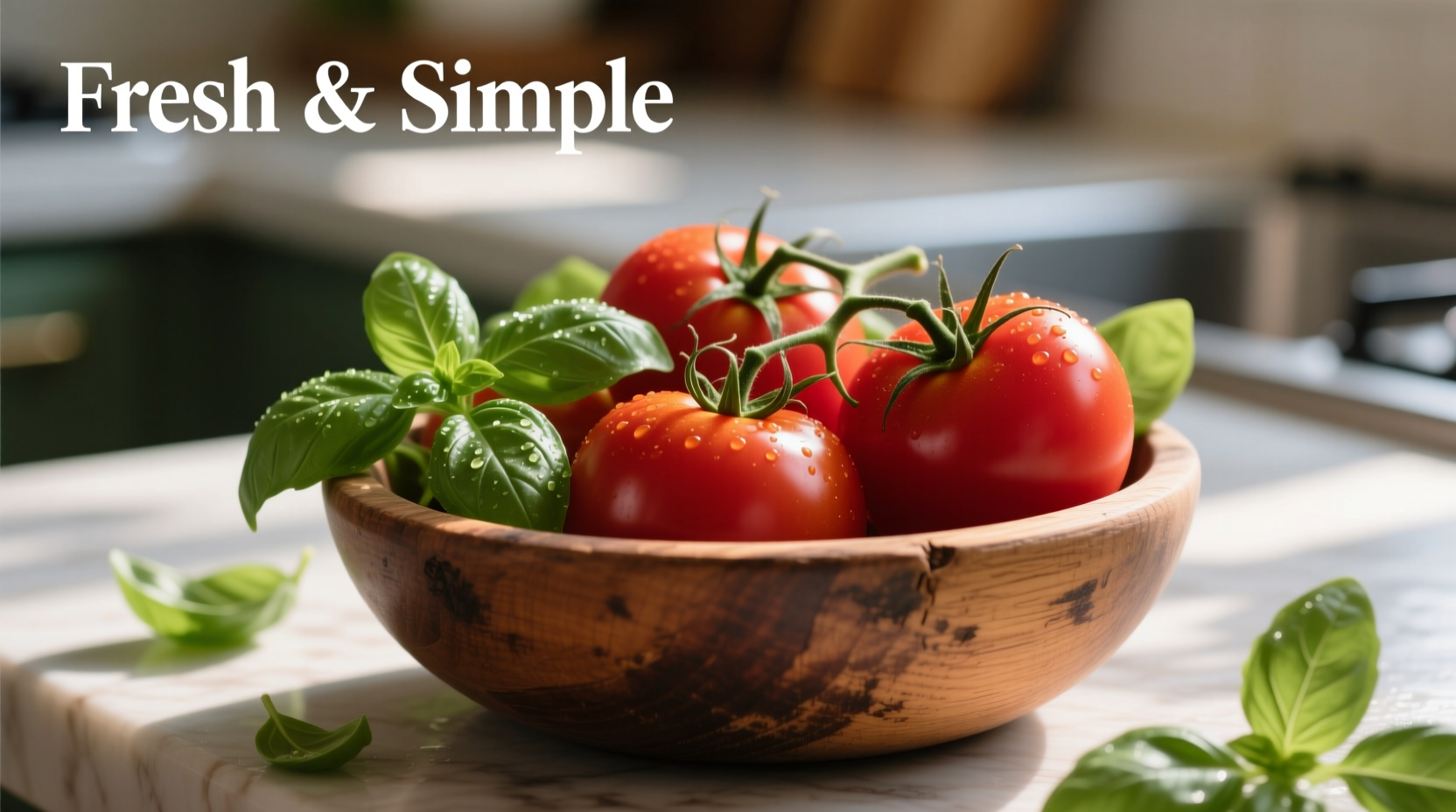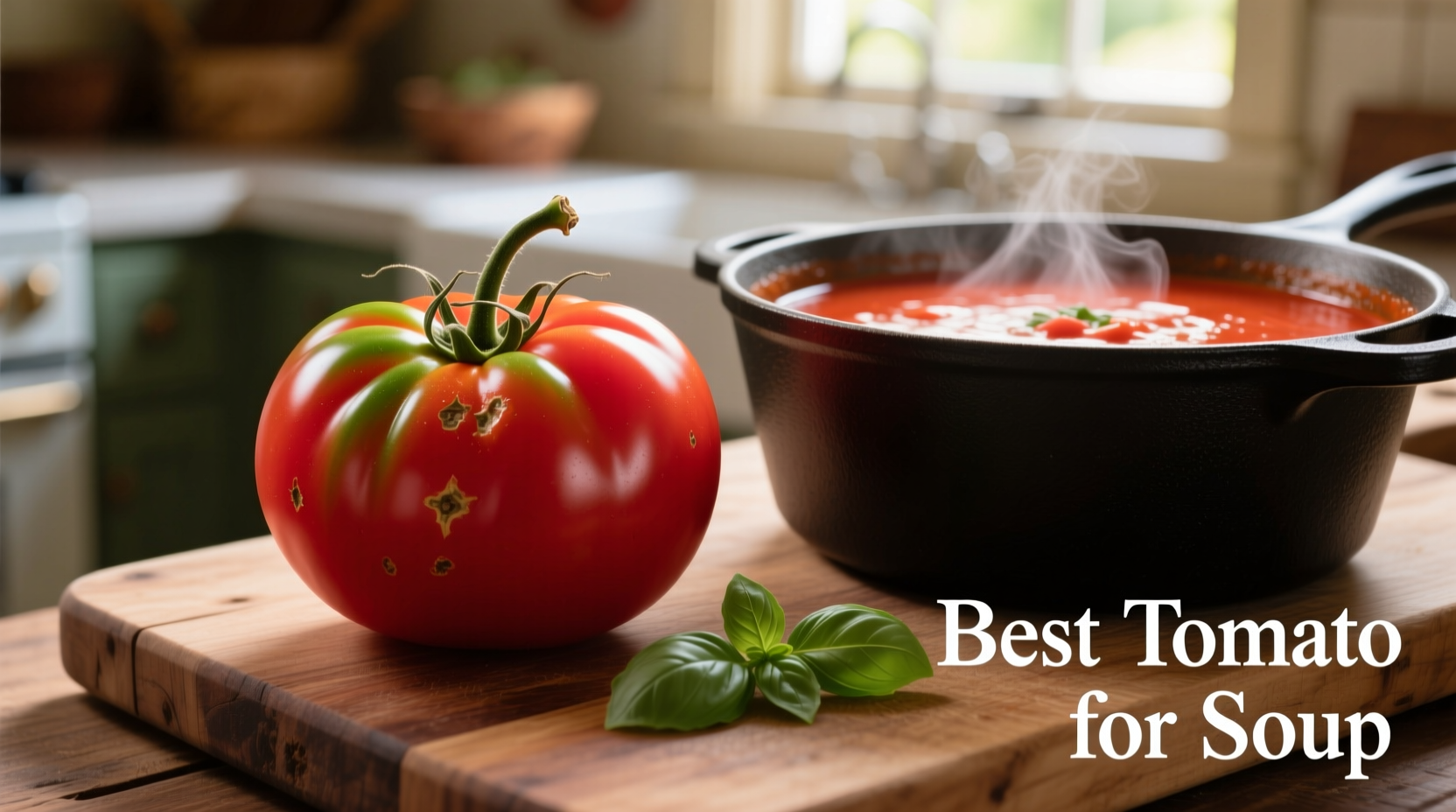The best tomatoes for tomato soup are Roma (plum) tomatoes and San Marzano varieties. These paste tomatoes have thick flesh, low moisture content, concentrated flavor, and ideal acidity levels that create rich, velvety soup without excessive wateriness. For year-round consistency, high-quality canned San Marzanos are often superior to out-of-season fresh tomatoes.
Why Your Tomato Choice Makes or Breaks Tomato Soup
Many home cooks wonder why their tomato soup never achieves that restaurant-quality depth. The secret isn't just in the technique—it starts with selecting the right tomato variety. Not all tomatoes perform equally in soup applications due to significant differences in flesh density, water content, acidity, and flavor concentration.
When making tomato soup, you need varieties with high solids content and natural sweetness balanced with acidity. Tomatoes with too much water require excessive reduction, which can dull flavors and waste energy. Understanding these characteristics helps you choose wisely whether shopping at summer farmers' markets or selecting canned options in winter.
Top Tomato Varieties Compared: The Soup Scientist's Perspective
Professional chefs and food scientists evaluate tomatoes for soup based on four critical factors: flesh-to-juice ratio, natural pectin content, sugar-acid balance, and flavor complexity. Here's how common varieties measure up:
| Tomato Variety | Flesh/Juice Ratio | Acidity Level | Best For Soup? | When to Use |
|---|---|---|---|---|
| Roma (Plum) | 75% flesh / 25% juice | Moderate-high | ★★★★★ | Fresh summer months |
| San Marzano | 80% flesh / 20% juice | Moderate | ★★★★★ | Year-round (canned) |
| Vine-Ripened | 60% flesh / 40% juice | Low-moderate | ★★★☆☆ | Summer only |
| Beefsteak | 50% flesh / 50% juice | Low | ★☆☆☆☆ | Avoid for soup |
| Cherry | 65% flesh / 35% juice | High | ★★★☆☆ | Specialty applications |
The Roma Tomato: Soup Kitchen Workhorse
Roma tomatoes (also called plum tomatoes) are the most accessible high-performance option for tomato soup. Their oblong shape, fewer seed cavities, and thick walls deliver approximately 25% less liquid than round varieties. According to research from the University of California's Agriculture and Natural Resources department, Romas contain 4.2% total solids compared to 3.1% in standard round tomatoes—meaning more flavor per ounce with less reduction time.
Pro tip: When selecting fresh Romas, choose specimens with deep red color extending to the stem end and firm texture. Avoid any with yellow shoulders, which indicate under-ripeness and lower sugar content. The USDA's Agricultural Research Service confirms that fully vine-ripened tomatoes develop 20-30% more flavor compounds than those ripened off-vine.

San Marzano: The Gold Standard (With Caveats)
True San Marzano tomatoes (DOP-certified from Italy's Sarno River valley) represent the pinnacle for tomato soup. These elongated fruits have exceptionally sweet flavor with lower acidity than Romas, creating naturally balanced soup without needing added sugar. Their higher pectin content yields a luxurious, velvety texture that emulsifies beautifully with dairy or olive oil.
However, be cautious of imitations. The True San Marzano Tomato Consortium reports that over 80% of "San Marzano" labeled cans in the US contain non-certified varieties. Look for the Denominazione di Origine Protetta (DOP) seal and the consortium's six-pointed star logo. For verification, check the consortium's official database at consorziosanmarzano.it.
Fresh vs. Canned: The Seasonal Reality Check
Contrary to popular belief, canned tomatoes often outperform fresh off-season tomatoes for soup. The University of Massachusetts Amherst's Food Science department found that vine-ripened tomatoes processed within hours of harvest retain more lycopene and flavor compounds than supermarket tomatoes shipped green and artificially ripened.
Consider this seasonal decision guide:
- June-September: Use fresh Romas from local sources (farmers' markets preferred)
- October-May: Choose DOP San Marzano or high-quality domestic canned plum tomatoes
- Year-round exception: When making roasted tomato soup, summer beefsteaks can work well due to caramelization benefits
Common Tomato Selection Mistakes to Avoid
Even experienced cooks make these critical errors when choosing tomatoes for soup:
- Mistake: Using watery beefsteak varieties
Why it fails: Requires 40-60% more reduction time, leading to flavor degradation - Mistake: Choosing under-ripe tomatoes to "cook out" acidity
Why it fails: Unripe tomatoes lack developed flavor compounds regardless of cooking time - Mistake: Assuming all canned tomatoes are equal
Why it fails: Many budget brands use lower-grade tomatoes with added calcium chloride that prevents proper breakdown
Professional Technique: Maximizing Flavor from Your Tomatoes
Regardless of your tomato selection, these chef-recommended techniques optimize results:
- Peel strategically: Remove skins only from fresh tomatoes (they contain bitterness); canned tomatoes don't require peeling
- Seed selectively: For fresh tomatoes, remove excess gel and seeds if texture is crucial; canned tomatoes have already been processed optimally
- Acidity balancing: Add 1/4 teaspoon baking soda only if tomatoes taste overly acidic—never as routine practice
- Flavor layering: Sauté tomato paste made from your chosen variety before adding liquid for deeper flavor
Remember that the best tomato for tomato soup ultimately depends on your specific recipe and seasonal availability. By understanding the science behind tomato varieties, you'll consistently create richer, more flavorful soup regardless of which option you choose.
Frequently Asked Questions
Can I use cherry tomatoes for tomato soup?
Yes, but with limitations. Cherry tomatoes have higher acidity and sugar content, which creates a brighter flavor profile. They work best when roasted first to concentrate flavors, then combined with lower-acid varieties like Romas. Avoid using cherry tomatoes exclusively as they require significant reduction and may create an unbalanced sweet-sour taste.
Why do some recipes call for adding tomato paste?
Tomato paste, made from concentrated Roma or San Marzano tomatoes, adds depth through caramelized sugars and intensified umami compounds. The Maillard reaction during paste production creates flavor molecules not present in fresh tomatoes. Adding 2-3 tablespoons of quality paste before liquid ingredients builds a flavor foundation that compensates for lower-quality tomatoes.
Are heirloom tomatoes suitable for soup?
Most heirloom varieties lack the necessary flesh density for optimal soup texture. Their higher water content and variable acidity often produce inconsistent results. Exceptions include 'Amish Paste' and 'Jersey Devil' heirlooms specifically bred for sauce-making. If using heirlooms, combine them with 50% Roma tomatoes to achieve proper consistency.
How does tomato acidity affect soup quality?
Acidity (measured as pH) critically impacts both flavor balance and texture. Ideal tomato soup pH ranges between 4.2-4.6. Tomatoes below 4.2 taste overly sharp and may curdle dairy; above 4.6 taste flat and lack brightness. San Marzanos naturally fall in this range, while many fresh varieties require balancing with a pinch of sugar or reduction to concentrate acids.
What's the best way to store fresh tomatoes for soup?
Never refrigerate fresh tomatoes intended for soup. Cold temperatures below 55°F (13°C) destroy flavor compounds and create mealy texture. Store at room temperature stem-side down on a counter away from direct sunlight. For optimal flavor development, allow tomatoes to reach full ripeness (give slightly to gentle pressure) before use. The University of California's post-harvest research shows tomatoes continue producing flavor compounds for 3-5 days after picking when stored properly.











 浙公网安备
33010002000092号
浙公网安备
33010002000092号 浙B2-20120091-4
浙B2-20120091-4